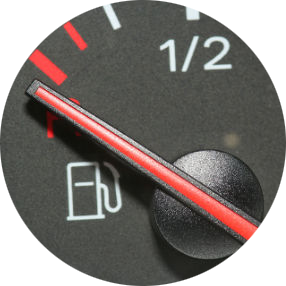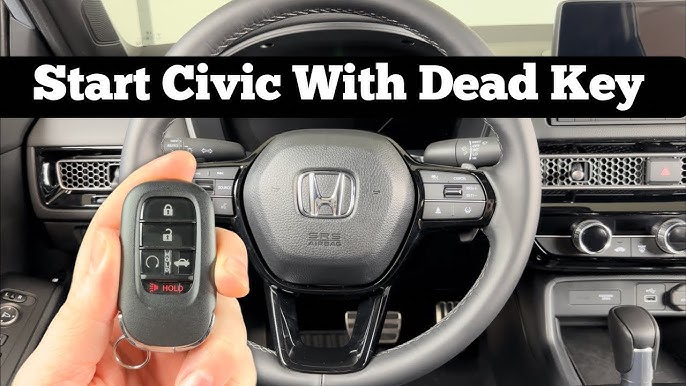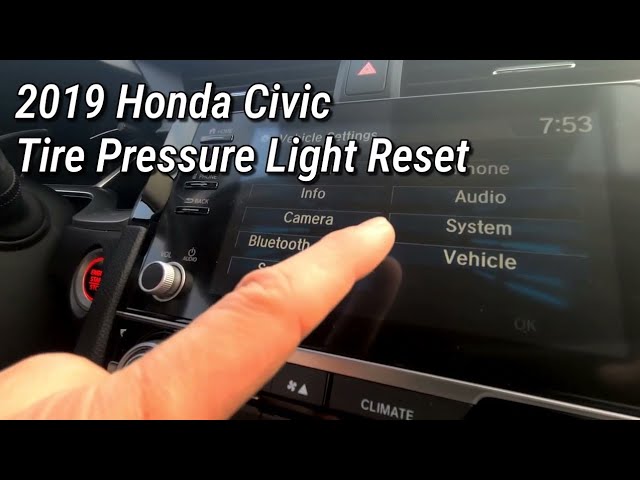As an Amazon Associate, I earn from qualifying purchases
Have you ever wondered how far your Honda Civic can really go once the fuel light turns on? That little warning feels like a race against time, right?
Knowing exactly how many miles you have left before running out can save you from stress, unexpected stops, and costly towing. You’ll discover the surprising distance your Civic can cover on empty and tips to make the most of those last precious drops of fuel.
Keep reading—you might be closer to a full tank than you think!
Honda Civic Fuel Basics
The Honda Civic is known for its fuel efficiency and reliability. Understanding its fuel system helps you know how far it can go on empty. The fuel system includes the tank size and how the fuel gauge works. Both affect how much fuel you have left and your driving range.
Knowing these basics helps you avoid running out of gas. It also lets you plan your trips better. Let’s explore the key parts of the Honda Civic’s fuel system.
Fuel Tank Capacity
The fuel tank size of a Honda Civic varies by model year. Most recent models have a tank capacity of about 12.4 gallons. This size allows for longer trips without frequent refueling. Smaller tanks mean fewer miles per tank. Larger tanks provide more driving range.
Keep in mind that the actual usable fuel may be slightly less than the total capacity. This is to prevent damage to the fuel pump. Knowing the tank size helps estimate how far you can drive on a full tank.
Fuel Gauge Accuracy
The fuel gauge in a Honda Civic shows an estimate of the fuel left in the tank. It uses sensors that detect the fuel level. The gauge may not always be perfectly accurate. It can lag or jump as fuel moves inside the tank during driving.
Many drivers notice the needle stays on empty before the car actually stops running. This is a safety buffer to avoid running out of gas. Still, it is best not to rely solely on the gauge. Watching your mileage and refueling early is wise.
What ‘on Empty’ Really Means
Seeing the fuel gauge hit empty on your Honda Civic can cause panic. What does “on empty” really mean? It does not mean the tank is completely dry. The gauge shows a low fuel level, but some fuel remains. Knowing this helps you understand how far you can drive safely after the light comes on.
Reserve Fuel Amount
When the fuel gauge shows empty, about 1.5 to 2 gallons of fuel are still in the tank. This reserve amount varies slightly by model and year. This leftover fuel allows you to drive around 30 to 50 miles before the tank is truly empty. The exact distance depends on driving habits and road conditions.
Reserve fuel gives you time to find a gas station. It is not a reason to delay refueling. Running out of fuel can damage the engine and fuel pump. Use the reserve wisely and plan to fill up soon.
Fuel Warning Light Function
The fuel warning light turns on before the gauge reaches empty. It acts as an early alert to low fuel levels. The light usually comes on when about 10-15% of the tank remains. This warning helps prevent unexpected stops on the road.
The light flashes or stays steady depending on the model. It reminds you to refuel as soon as possible. Ignoring this warning can leave you stranded. The fuel warning light is a helpful tool to keep your Honda Civic running smoothly.
Mileage After The Light Comes On
The moment the fuel light turns on in a Honda Civic can cause a mix of worry and curiosity. Drivers often wonder how far they can drive before running out of gas. This section explains the mileage after the light comes on. It helps you understand what to expect and plan your next stop wisely.
Average Distance On Empty
Most Honda Civics can travel about 30 to 50 miles after the fuel light shows. This range varies by model and year. The fuel light usually comes on when there are 1.5 to 2.5 gallons left. This amount can keep you going for quite a while, but it is not unlimited. It is best to fill up soon to avoid running out.
Factors Affecting Distance
Several things affect how far your Honda Civic goes after the light comes on. Driving speed plays a big role. Driving fast uses more fuel. Traffic and road conditions also matter. Stop-and-go traffic uses more gas than steady highway driving. Weather affects mileage too. Cold weather can reduce fuel efficiency. The car’s load, like passengers and cargo, impacts distance. Proper maintenance, such as clean air filters and correct tire pressure, helps improve mileage.
Credit: www.driveaccord.net
Driving Tips To Maximize Distance
Driving a Honda Civic on empty requires smart habits to stretch your fuel. Small changes in driving style help you go farther. You can avoid running out of gas too soon. These tips focus on saving fuel and improving efficiency.
Smooth Acceleration
Press the gas pedal gently. Sudden pushes waste fuel quickly. Gradual acceleration keeps the engine steady. It uses less energy and saves gas. Try to keep your speed steady after starting.
Avoiding High Speeds
Drive slower on highways. High speeds burn more fuel fast. Staying below 60 miles per hour helps. Your Honda Civic uses less gas this way. Slow and steady wins the distance race.
Minimizing Air Conditioner Use
Turn off the AC to save fuel. Air conditioners put extra load on the engine. Use the fan or open windows instead. This lowers fuel consumption and helps you go further. Keep comfort in balance with fuel savings.
Risks Of Driving On Empty
Driving your Honda Civic on an empty tank may seem harmless at first. The gauge hits empty, yet the car keeps running. But this habit carries risks that affect your car and safety.
Running out of fuel can cause problems that cost money and time. It also puts you in unsafe situations on the road. Understanding these risks helps you avoid trouble and keep your car in good shape.
Fuel Pump Damage
The fuel pump relies on gasoline to stay cool and lubricated. Driving on empty makes the pump work harder without enough fuel. This can cause it to overheat and wear out faster.
Damaged fuel pumps lead to costly repairs. Sometimes the pump stops working completely, leaving your car unable to start.
Stranding And Safety Concerns
Running out of gas can leave you stranded in dangerous places. Highways, dark roads, or bad weather make it risky to wait for help.
Stranding increases chances of accidents or injury. It also wastes your time and causes stress.
Always keep enough fuel to avoid these safety problems.

Credit: www.earnhardthonda.com
Real Owner Experiences
Many Honda Civic owners share their experiences about driving on empty fuel. These stories help us understand how far the car can really go. Real-life accounts often show differences from official numbers. They give practical insights for everyday drivers.
Reported Mileage Ranges
Owners say their Honda Civics travel between 20 to 50 miles on empty. The exact range depends on driving style and road conditions. Some report up to 60 miles, but this is less common. Most drivers feel safe stopping within 30 miles after the fuel light comes on.
City driving usually lowers the distance because of stop-and-go traffic. On highways, Civics tend to stretch their range farther. Cold weather and heavy loads can also reduce the miles gained on empty.
Unexpected Situations
Many drivers face surprises when running out of fuel. Some found the car sputtering suddenly without warning. Others noticed the fuel gauge dropping faster than expected. A few owners got stranded due to misjudging the distance left.
Emergency stops happen more than owners expect. Some had to call for roadside assistance. Others pushed the car to the nearest gas station. These stories remind drivers to refill early and avoid risks.
How To Prevent Running Out
Running out of fuel in your Honda Civic can cause stress and delays. Avoid this problem by taking simple steps. You can keep your car running smoothly and save yourself from unexpected stops. These easy habits help you stay aware of your fuel level and plan ahead.
Regular Fuel Checks
Check your fuel gauge every time you start your car. Do not wait until it is near empty. Make it a habit to fill up when the tank is about one-quarter full. This reduces the risk of running out on the road. Regular checks help you know exactly how much fuel you have left.
Using Fuel Apps And Alerts
Use fuel apps on your phone to track fuel levels and nearby gas stations. Some apps send alerts when your fuel gets low. These alerts remind you to refuel before the tank gets empty. Apps also show the cheapest gas prices near you. This saves money and avoids running dry.

Credit: www.reddit.com
Frequently Asked Questions
How Far Can A Honda Civic Go After The Fuel Light Turns On?
A Honda Civic can usually travel 30 to 50 miles after the fuel light comes on.
What Factors Affect Honda Civic’s Distance On Empty Fuel?
Driving speed, road type, and car condition affect how far the Civic goes on empty.
Is It Safe To Drive A Honda Civic On Empty Fuel?
Driving on empty is risky; it can damage the fuel pump and leave you stranded.
How Much Fuel Is Left When Honda Civic Fuel Light Appears?
The fuel light usually comes on with about 1. 5 to 2. 5 gallons of fuel left.
Can Driving Habits Extend Honda Civic’s Range On Empty?
Yes, slow driving and avoiding sudden stops help save fuel and extend range.
What Happens If Honda Civic Runs Completely Out Of Fuel?
The engine stops, and the car won’t start until refueled and restarted properly.
Conclusion
A Honda Civic can travel a surprising distance on empty. The exact miles vary by driving habits and road conditions. Still, it’s wise not to rely on this often. Running out of fuel can cause engine damage. Always refill your tank before it gets too low.
Staying aware helps avoid unexpected stops. Drive smart and keep your car ready. This keeps you safe and your Civic healthy.
As an Amazon Associate, I earn from qualifying purchases


